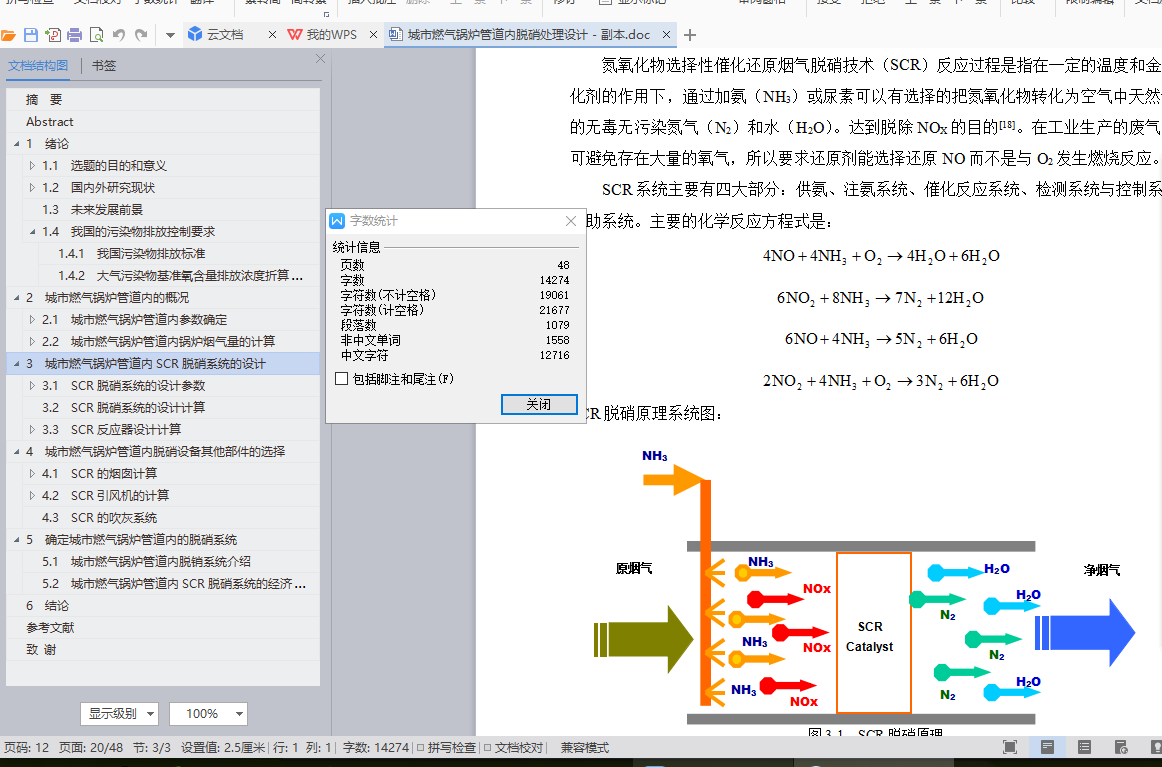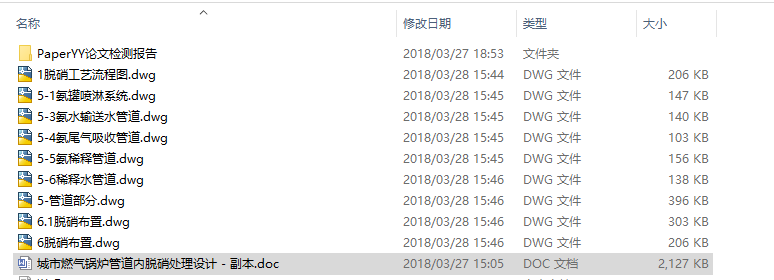摘 要
随着国民经济的发展,锅炉作为一种重要的能源转换设备得到了广泛的研究和长足的发展,在工业生产中得到了广泛的应用。燃油锅炉与燃煤锅炉相比,没有机械燃烧热损失,不产生炉渣,比较清洁。 综合考虑现如今国内外锅炉的研究情况,在锅炉设计的过程中,主要考虑的因素是保证炉内着火,炉膛内有足够的辐射热量,在整个锅炉结构的设计过程中,要确保有一定的气密性来保证炉膛内进行的燃烧。影响锅炉管束传热效果的主要因素是烟气温度、速度等。
城市燃气锅炉管道内污染物NOX的排放日益严重地影响着环境、气候和人类的健康,解决电站锅炉NOX排放对环境的影响,已成为一个中国要问题。本论文经过对锅炉燃煤烟气脱硝设计,并对其技术经济特性进行了相应分析,进而针对大唐哈尔滨热电厂的锅炉进行了脱硝方案的设计。该厂在炉膛上部区域喷入一定量的液氨溶液,将烟气中的NOX还原N2和H20。改设计通过对SCR反应器及液氨系统的设计,使烟气的脱硝效率达到80%或以上。
关键词:燃气锅炉;脱硝设计,脱硝设备;处理工艺
Abstract
With the development of the national economy, boilers have been extensively studied and developed as an important energy conversion device, and have been widely used in industrial production. Compared with coal-fired boilers, oil-fired boilers have no mechanical combustion heat loss, no slag, and are relatively clean. Considering the research situation of boilers at home and abroad today, the main consideration in the boiler design process is to ensure that there is fire in the furnace and there is sufficient radiant heat inside the furnace. During the design process of the entire boiler structure, it is necessary to ensure certain Hermeticity ensures the combustion in the hearth. The main factors affecting the heat transfer effect of the boiler tube bundle are the flue gas temperature and speed.
The emission of pollutant NOX in urban gas boiler pipelines increasingly affects the environment, climate, and human health. Resolving the impact of NOX emissions from power station boilers on the environment has become a major issue for China. In this thesis, after denitrification design of boiler coal-fired flue gas, and its technical and economic characteristics are analyzed accordingly, then the denitrification scheme is designed for the boiler of Datang Harbin Thermal Power Plant. The plant injected a certain amount of liquid ammonia solution in the upper region of the furnace to reduce NO x in the flue gas to N 2 and H 2 O. Redesigned through the design of SCR reactor and liquid ammonia system, so that the efficiency of flue gas denitration reached 80% or more.
keyword:Gas fired boiler; denitrification design; denitrification equipment; treatment process
目 录
摘 要 I
Abstract II
1 绪论 1
1.1 选题的目的和意义 1
1.1.1 选题的目的 1
1.1.2 选题的意义 1
1.2 国内外研究现状 2
1.2.1 脱硝技术综述 2
1.2.2 国内脱硝技术研究现状 3
1.2.3 国外脱硝技术研究现状 3
1.3 未来发展前景 3
1.4 我国的污染物排放控制要求 4
1.4.1 我国污染物排放标准 4
1.4.2 大气污染物基准氧含量排放浓度折算方法 5
2 城市燃气锅炉管道内的概况 6
2.1 城市燃气锅炉管道内参数确定 6
2.1.1 城市燃气锅炉管道内简介 6
2.1.2 城市燃气锅炉管道内锅炉的主要参数 6
2.2 城市燃气锅炉管道内锅炉烟气量的计算 8
2.2.1 理论空气量计算 8
2.2.2 理论烟气容积的计算 9
3 城市燃气锅炉管道内SCR脱硝系统的设计 12
3.1 SCR脱硝系统的设计参数 12
3.1.1 SCR脱硝设备的原理 12
3.1.2 SCR工艺流程 13
3.2 SCR脱硝系统的设计计算 13
3.3 SCR反应器设计计算 17
3.3.1 SCR反应器 17
3.3.2 催化反应系统 17
3.3.3 SCR塔的设计计算 21
3.3.4 氨区的设计 23
3.3.5 液氨的存储与供应系统 27
3.3.6 SCR检测与控制系统 27
3.3.7 稀释空气供应系统 28
4 城市燃气锅炉管道内脱硝设备其他部件的选择 29
4.1 SCR的烟囱计算 29
4.1.1 烟囱的有效高度计算 29
4.1.2 烟囱直径的计算 31
4.2 SCR引风机的计算 32
4.2.1 SCR的引风机的参数确定 32
4.2.3 SCR引风机的选型 36
4.3 SCR的吹灰系统 36
5 确定城市燃气锅炉管道内的脱硝系统 37
5.1 城市燃气锅炉管道内脱销系统介绍 37
5.2 城市燃气锅炉管道内SCR脱硝系统的经济分析 37
6 结论 38
参考文献 39
致 谢 40





